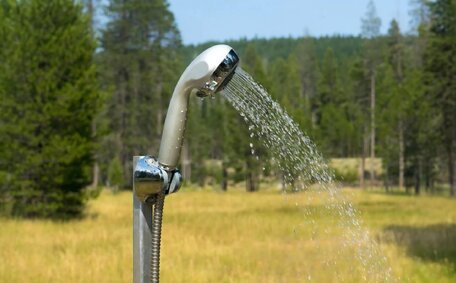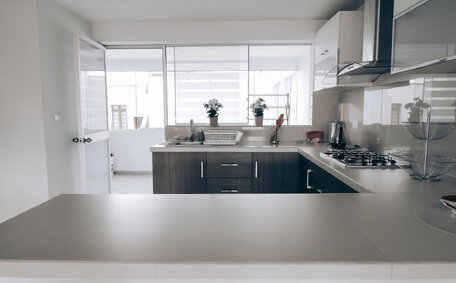Introduction to gas shutoff valves
Gas shutoff valves are crucial safety devices found in any home or building with gas appliances. They allow you to manually stop the flow of gas to your property. Knowing where your gas shutoff valve is located and how to use it properly can literally be a lifesaver in an emergency.
You’ll typically find the gas shutoff valve near the gas metre outside your home or building.
It may be recessed into the wall or pipe. The shutoff valve itself is usually a T-shaped handle or switch. The shutoff valve itself is usually a T-shaped handle or switch. The shutoff valve itself is usually a T-shaped handle or switch.
Having easy access to the gas shutoff valve lets you quickly turn off your gas if you ever smell a leak or have another gas-related emergency. You can shut off the gas before calling your local utility company or a licenced technician for help.
Just remember to never turn the gas back on yourself. Only qualified professionals should restore your gas service after it’s been shut off at the main valve.
Locating your gas meter
Finding your gas metre is the first step in being able to shut off your gas supply. Your gas metre will likely be located outside your home or building. Common spots include:
- Near the front foundation
- Along the side of the house
- In the backyard or alleyway
- On an exterior wall
- In a recessed alcove
- Inside a locked metre box
Look for a pipe coming out of the ground with gauges and dials on it. This is the gas metre. There will be information like your account number, gas usage, and pressure readings. The shutoff valve will be connected to the metre, either directly on the pipe or just below it.
If you can’t easily spot the gas metre outside, it may be in your basement, utility room, garage, or crawlspace. Check areas where the gas line comes into your home. The metre should be installed upstream from any branches leading to appliances.
If you’ve just moved in, ask your gas or utility company where the metre is located. They can provide the exact position. Knowing how to quickly turn off your gas at the metre is crucial in an emergency.
Identifying your gas shutoff valve
Once you’ve located your gas metre, you’ll see the gas shutoff valve attached to the pipe. This valve allows you to manually stop the flow of gas to the property. Here’s how to identify it:
- The shutoff valve will be within 6 feet (1.8 metres) of the gas metre on the pipe.
- Look for a yellow handle or switch shaped like a T or an L lying parallel or perpendicular to the pipe.
- Make sure it’s on the house side of the gas metre, not the street side.
- The shutoff valve should be clearly labelled "gas" on the handle or pipe.
- Turning the valve 90 degrees in either direction shuts off gas flow.
If you have multiple gas appliances, individual shutoff valves will be located right next to each unit. This allows you to turn off gas to a single appliance for maintenance. The main shutoff valve at the metre controls gas flow to the entire property.
Knowing the exact location of your gas shutoff valve is crucial in an emergency. Make sure it’s clearly marked and accessible. A quick shutoff could save lives if you ever smell a serious gas leak or have another gas-related issue.
When should you turn off your gas supply?
There are a few key times when you should turn off your gas supply:
- If you smell a gas leak. If you detect even a faint natural gas smell in or around your home, turn off the main gas shutoff valve immediately. Open windows to ventilate, evacuate the area, and call the gas company or emergency services.
- Before doing any work on gas appliances or lines. Shut off the main gas valve before servicing, repairing or replacing any gas appliances, pipes or fittings. This prevents accidental ignition while working.
- During emergencies or disasters. Earthquakes, floods, tornadoes and other events can damage gas lines and cause dangerous leaks. Shut off the gas as a precaution.
- When going away for extended periods. Turning off your gas supply while travelling prevents accidents and gas waste.
- When performing maintenance. Turn off the main gas valve when doing renovations, repairs or painting where ignition sources will be present.
In any situation, do not turn your gas back on after shutting off the main valve. Only qualified gas technicians have the expertise to safely restore your gas service once it’s been turned off at the metre.
How to turn off your gas supply at the meter
When you need to shut off your gas supply at the main source, follow these steps:
- Locate your gas metre outside your home. It will likely be in a box or alcove on the exterior wall or along the foundation.
- Open the gas metre box. It may require a special key or tool to access it.
- Look inside the metre box to find the gas supply shutoff valve. This will be a T-shaped or L-shaped handle.
- To turn off the gas, turn the shutoff valve handle 90 degrees so it is perpendicular to the pipe. You will feel it stop and cannot turn it further.
- Once in the off position, the valve handle will be crosswise to the pipe. Gas flow is now stopped.
- To confirm gas supply is off, try turning on a gas stove burner or other appliance inside the house. It should not ignite.
- Leave the gas in the off position until a qualified technician can conduct repairs and turn it back on.
Following these simple steps lets you quickly shut off your building’s gas supply at the main shutoff valve. Only attempt to turn gas back on once professionals confirm it is safe to do so.
Turning off gas appliances and pilot lights
Before shutting off the main gas supply to a property, it’s crucial to turn off all individual gas appliances and extinguish any pilot lights. This prevents a dangerous gas buildup inside your home when the main valve is closed.
Follow these safety steps before turning off your gas at the metre:
- Turn the knobs for all gas appliances like stoves, ovens, and water heaters to the 'off’ position. Make sure burners are completely extinguished.
- Locate the pilots, small flames that ignite appliances, and switch them off. Pilots are often inside ovens, water heaters, and fireplaces.
- Unplug any appliances with electronic ignition like furnaces and dryers so they don’t try to ignite.
- Close the valve on freestanding propane tanks by turning clockwise.
- If you have a pool heater, switch this off at the appliance or fuel line.
Taking the time to switch off all gas to appliances first prevents fuel continuing to flow but having nowhere to go when the main valve shuts off gas to the property. This simple step enhances safety and avoids potential appliance damage.
What to do after shutting off the gas
p>p>p>p>p>p>p>p>
Turning your gas supply back on
After your gas supply has been turned off, it should only be turned back on by a licenced professional. Attempting to turn it back on yourself can be extremely dangerous.
Only a qualified technician has the expertise to:
- Check all gas appliances for leaks
- Ensure there is no trapped gas or damage to lines
- Purge any air from pipes
- Test connections and confirm safety
- Light pilot lights in the proper sequence
Professionals have specialised equipment to sniff for lingering gas, measure gas pressure, and confirm that it is completely safe to restore your gas system functionality.
Never turn your gas back on after an emergency shut off until technicians do a full inspection and give the all-clear. Gas can leak and accumulate when off, creating serious ignition risks when flow resumes. Only experts can mitigate these risks and prevent potential disaster.
Be patient during the process of getting your gas restored. This ensuresappliances relight properly and safely. Rushing gas service restoration endangers lives and property.
Gas safety tips
Handling gas appliances and fuel lines properly is crucial for your safety. Follow these tips:
- Have gas appliances professionally installed and serviced annually.
- Purchase appliances approved by local gas authorities.
- Regularly check flexible gas lines for wear and replace damaged hoses.
- Keep the area around your gas metre clear for easy access.
- Never store flammable materials near gas appliances or metres.
- Learn how to shut off your gas and when it’s appropriate.
- If you smell gas, leave immediately and call the gas company.
- Replace old gas appliances. Newer models are more efficient and safer.
- Make sure adequate ventilation exists around any gas-burning appliance.
- Consider installing carbon monoxide detectors for added safety.
Following basic gas safety precautions reduces the risks associated with this common fuel. Take the initiative to safeguard your home and family.






